Wednesday June 7th 2023
We are in the Azores getting Vega ready for the final passage home. Hopefully you will have been following Hugh’s blog and so will know that Hugh and son Olly sailed here from Antigua whilst I jumped ship there and took the sensible way home – in an aeroplane. I didn’t feel too guilty as we had completed our circumnavigation in Antigua when we crossed our outgoing track, so doing ‘a lap’ as we’ve discovered it’s called in nautical circles. And no, we won’t be doing a second one going the other way. I flew here a few days ago and Olly returned home yesterday … but more of that another time.
Here is a post about our sail from St Helena to Antigua, via Fernando de Noronha in Brazil… I do hope worth waiting for:
It is around 4000 miles from St Helena to Antigua in the Caribbean, almost five weeks of sailing. The longest passage we’d done so far on our circumnavigation was from the Galápagos to the Marquesas in French Polynesia, about 3000 miles across the Pacific and some four weeks at sea. When we set off from St Helena we were not absolutely sure that we’d stop on the way but as the days passed I became increasingly convinced that a break on land was called for, to preserve sanity and marital harmony. Fortunately the Brazilian island of Fernando de Noronha is conveniently placed almost exactly halfway along the route.
St Helena to Fernando de Noronha – 15 days at sea
Friday 17th March to Saturday 1st April
We couldn’t leave St Helena until our mooring lines, which had become tangled around the buoy, had been released. I’d snorkelled to try to free them a couple of days earlier but the lines were wound too tightly under the buoy. This is not an uncommon problem here and some yachties just cut the lines and leave but we’d arranged for a guy from the dive shop to come over. He arrived early and, with scuba gear, it only took him ten minutes to free them, to our relief. One final visit ashore for a coffee with Emily in the Consulate Hotel to download the latest weather forecast and last minute shopping for fresh bread and more cheese and we were off soon after noon.
As we were preparing to leave a large ray swam slowly past Vega and then followed us for the next 20 minutes as we motored away from the island. Dolphins swam past our bow and in the distance one leapt high in the air. We passed a mass of seabirds swooping low over the waves, feasting on a shoal of fish. Cruising can be quite magical sometimes!
It was a slow start as there was little wind in the shadow of St Helena and we only managed a speed of around 4 knots for the first 24 hours, sailing in a gentle sea. By the end of the second day the wind came up and pushed our little boat to over 6 knots. With the wind almost directly behind us on day 3 we poled out the genoa, enabling us to sail wing on wing, great downwind sailing.
And so the days passed. We adjusted our sails, reducing or increasing them as conditions required. We downloaded a daily weather forecast and ran LuckGrib, the passage planning app, to update our route, getting additional advice from Des about the weather. We wrote emails and loved hearing from family and friends at sea. We read and listened to podcasts. I was ploughing through Nelson Mandela’s Long Walk to Freedom to, rather belatedly, understand more about the fight to end apartheid in South Africa. There were the usual domestic chores around the boat to do and I repaired the sprayhood where the stitching had come apart allowing rain into the cockpit. We made meals to brighten the evenings and sat in the cockpit eating our supper, watching the sunset and listening to music. We introduced ‘film night’ and would watch an episode of The Good Wife after supper, but this didn’t last longer than a week as we decided we would much rather sleep. Hugh turned in before 8pm to get 5 hours in bed before swapping over, allowing me a longer period of uninterrupted sleep from 1am. He would go back to bed after breakfast and, if necessary, one of us could nap in the afternoon.
After leaving St Helena we had really easy downwind sailing often goosewinged, some of the nicest, most relaxing sailing we’d had on the circumnavigation, most days making a steady 5-6 knots. Mostly the days passed and I was grateful for the largely gentle seas and warm sunny days and nights. It could feel quite wonderful to be crossing this huge ocean in our tiny boat.
Our world closes in on passage without much news from the outside and we become preoccupied with the small and the routine. What meals to prepare, whether the batteries are sufficiently charged, do we have enough gas and water to last the passage, and with the weather, the wind, clouds, currents and waves. There is also the not so small: the sea, the sky, the stars and the enormity of it all. On watch at night we stargazed, feeling quite insignificant in comparison to the vastness of the sky above us, blanketed with a trillion stars, the Milky Way arching across the sky, the constellations and planets. Venus is bright in the sky for a few hours after sunset before it sinks below the horizon; there is Mars (more orange than red), Sirius (the brightest star), Orion (about the only constellation I can easily recognise). We would be leaving behind the stars of the Southern Hemisphere, especially the Southern Cross, as we would soon cross the equator for the fourth and last time on our voyage. Over such a long trip we can watch the phases of the moon, initially a waxing crescent moon which shone for only an hour after the sun had set, getting a little larger and a bit higher in the sky each night, setting an hour later until the full moon illuminated the sea around us all night long.
Over half way to Fernando de Noronha from St Helena we both were finding it hard at times. We had so far to go, so many weeks at sea and for me times when every minute seemed to last hours, when the trip felt interminable. The days started to become hot and clammy as we neared the equator with the nights warm enough for just shorts and t-shirt.
At one point the steering started to make a worrying clunking sound as the wheel was turned. Hugh dug out the manuals, hung off the back of the boat to film the rudder with the GoPro, then emptied the rear lazarette to properly examine the steering mechanism. Emails went to and fro between Vega and Dan, the Malo agent in Lymington, and to friends Jon and Colin and to Dick on Maia, who all replied with useful suggestions. Everything looked fine so the conclusion was it must be a problem within the binnacle. Since this is so inaccessible we decided to get it looked at in Antigua – it wasn’t causing much of a problem as we mostly steer using the hydrovane.
The repair that Hugh had made to the duogen was holding out well, keeping our batteries charged and giving us enough power to keep running the freezer, so we were able to make meals with prawns, fish, sausages, chicken, smoked salmon, fish cakes and veggie burgers, as well as all the vegetables we’d bought in St Helena. We eat well at sea:
[easy-image-collage id=7793]So far from land there are few cargo ships, seabirds, dolphins or other marine life to be seen. The occasional flying fish would land on the deck and if we heard them flapping about we would chuck them back into the sea, but usually we discovered their dry and shrivelled corpses. On day 10 at sea, a solitary black bird flew around the boat looking for a perch and eventually landed on our bimini (the awning above the cockpit). We took pity on it and let it rest, thinking it must be tired as it was 500 miles from the nearest land, Ascension Island, and 700 miles from Brazil. Within a short period of time its mates arrived too, three landing on the solar panel with another one on the satellite dome. They all started squawking and squabbling, fighting amongst themselves as they jostled for the best perch. It began to feel a bit like a Hitchcock movie. They were gone the next morning soon after dawn and leaving, as expected, their mess all over the solar panel, deck and bimini.
The following night we had no more avian visitors but after dark I spotted what looked like a very bright star flashing red and green, stationary and well above the horizon. Initially I thought it might be an aeroplane but decided it couldn’t be as it wasn’t moving. Then a second, similar, flashing object appeared further to the west. They were there for several hours. Emily on EmilyLuna saw them too and we decided they must almost certainly be visitors from another galaxy.
One of the reasons to stop in Fernando de Noronha, apart from to break the journey and hopefully get some fresh fruit and vegetables, was to make water. Our fresh water tanks hold 400 litres and additionally we carry some 5 litre containers of water, in total around an extra 50 litres. Our water maker needs to be run at anchor in relatively clean water (so not in the usually badly contaminated water in a marina) although at a pinch we could run it when becalmed on passage. For the 450 litres to last us five weeks at sea would restrict us to about 12.5 litres a day. A lot of cruisers do this by using sea water to wash dishes and themselves and to cook in. We like to wash dishes in fresh water and have a occasional wash when we get too smelly… hence the need to stop and replenish our tanks. I was only allowed one hair-wash on passage and saved it for the day before we arrived at Fernando de Noronha.
All this time at sea we were in touch with EmilyLuna who had left St Helena the day after us having had repairs done to their prop-shaft. They took a more direct, northerly course than us and as they approached the ITCZ, the area of more unsettled weather around the equator, they had experienced squalls. We had been sailing a course quite a bit south of the rhumb line (ie the direct course) from St Helena to Fernando de Noronha to take advantage of the available wind and we had been rewarded with mostly steady sailing at 5 to 6 knots.
On our 14th day at sea we turned to head north and the wind started to die. The engine went on and for the next two days we alternately motored and sailed. On our final night at sea we sailed slowly at only 3.5 knots… a lovely warm, calm, relaxing time.
Fernando de Noronha
Saturday 1st to Thursday 6th April
On the morning of our 16th day at sea I woke to the most stunning and unexpected skyline as we approached Fernando de Noronha. A long, dramatic, craggy island with green slopes leading up to a huge central phallus of rock, with waves hitting the rocky coastline and sending plumes of spray 50 feet up into the air.
We motored around to the far side of the island where it was calmer and weaved our way past numerous small boats tied to buoys in the bay to shallower water where we could drop anchor. A few hours later EmilyLuna arrived and anchored nearby. It was too late to go ashore but I went for a wonderful swim off the back of the boat with Emily, good to stretch our limbs after so long confined in a small space. Near to sunset an assortment of tourist boats passed us, beautiful couples draped over the bows, young people enjoying a few drinks and music on board, heading out to watch the sun set. A few selfies later, when the sun had vanished below the horizon, they turned back to shore to continue their partying.
Arriving Fernando de Noronha, changing the St Helena courtesy flag to the yellow Quarantine flag, and the orange supply ship:
[easy-image-collage id=7826]The views from Vega:
[easy-image-collage id=7850]Sunset Fernando de Noronha:
[easy-image-collage id=7828]That night I couldn’t get to sleep for hours…not used to the early bedtime and perhaps I needed the violent rocking motion of the boat and all the noises of waves rushing past the hull and the banging of loose pots and pans in cupboards to lull me to sleep!
The following day we took the dinghy off the foredeck to go ashore to check in with Brazilian Immigration but weren’t able to get the outboard off the transom. Having last used it in Mayotte in October, the screws on the clamps which hold it in place were seized solid. Liberal use of WD40 and some brute force (Hugh’s not mine), after letting the WD40 do its job for a few hours, and it was free. We dinghied ashore, tied up to a small jetty by the harbour and dropped off our bag of rubbish.
Colin on Endorphin had promised us dolphins accompanying our dinghy to shore and a policewoman in string bikini. Disappointingly we got neither but we did get a friendly welcome at Immigration, offered demitasses of dark, sweet coffee and we especially enjoyed the air conditioning in their hut. The policeman there spoke a little English. He usually lived on the mainland in Recife and was posted here for a month each year… “it’s paradise” he smiled happily. The Immigration officer only spoke Portuguese but typed words on his computer using Google translate to be able to communicate with us.
An office with a view…..
… and the view from the office:
Fernando de Noronha is the largest of a collection of 21 small tropical islands and islets, about 220 miles from the Brazilian coast. It has a small airport, is popular with Brazilians for its beautiful beaches, diving and surfing, and tourists are limited to 400 a day. Much of the island is Marine National Park with the best beaches and great scuba diving as well as hiking trails, for which you need to buy a ten day permit. We’d been warned how very expensive it was, both in the shops and restaurants as well as the fees for yachts to visit. We paid £245 in anchoring and environmental fees for our four day visit and, whilst not cheap, it was not as bad as we’d anticipated.
At one point the island was covered in dense forest, as remarked on by Charles Darwin when he visited in the Beagle in 1832. Later the island was used as a penal colony and most of the original large trees were cut down to prevent escaped prisoners from hiding and from making rafts.
As usual chores took a priority. The supply ship had arrived the previous day so, with Keith and Emily, we caught the bus up a long steep hill to the centre of the island, glad not to walk in the heat and humidity of the day, to where there was a straggle of shops, the bank and ATM, several supermarkets, guest houses, restaurants and a gelateria. We had brought with us big bags of laundry and were directed down a side street and eventually guided down a muddy lane to a ramshackle building where white sheets billowed on rows of washing lines and several ladies were ironing clothes. Our washing would take two days and each item cost about US$1 regardless of whether it was a pair of nickers or a king sized sheet. Nearby a small supermarket was well stocked with fresh fruit and vegetables and we filled our bags and rucksacks to haul back to the boats.
Catching the bus to the middle of the island another day we walked down to one of the beaches on the north of the island to wander along the beautiful golden sand. There was a big surf and in the next bay surfers were riding the waves. Emily continued her walk along the coast, to then trek back as we oldies headed back up the path to catch the bus. As we did we were caught in a tropical downpour and with nowhere to shelter arrived at the bus stop completely drenched and bedraggled.
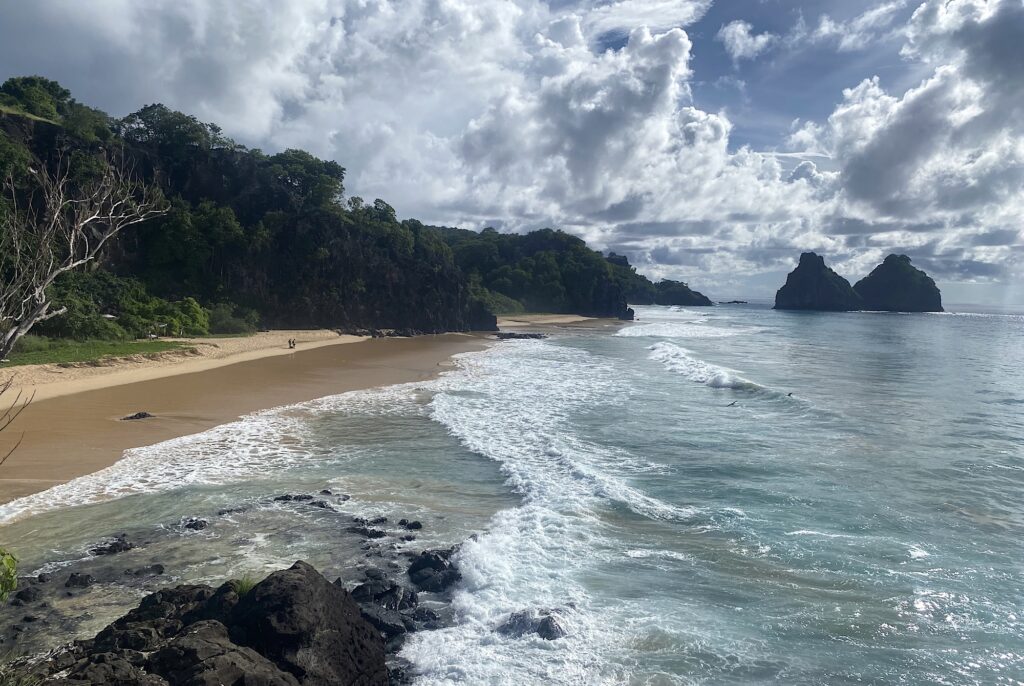
On Vega Hugh ran the water-maker to replenish our water tanks, refilled the fuel tanks with diesel from the jerry cans and we passage planned the next stage of our journey. On an unexpectedly rough and windy morning Hugh and Keith took the empty jerrycans ashore to fill them at a garage and I watched anxiously as our little dinghy bounced its way ashore through the big swell.
We managed to have a couple of good meals in restaurants and most days spent time in a cafe by the small harbour drinking coffee and using wifi, glad to catch up with family.
Fernando de Noronha to Antigua – 18 days at sea
Thursday 6th to Monday 24th April
We had agreed with Immigration to depart by 7am on the Thursday so as to not incur another day of fees but it was more like 8.30am by the time we were ready to raise the anchor. EmilyLuna headed off soon after but taking a different route than us. They would be heading to Grenada sailing along the coast of Brazil to take advantage of the strong Guyana current that runs along there at up to 3 knots. We had decided to take a more northerly route towards Antigua which our passage planning app suggested would mean just over two days motoring. We hoped this route would also involve fewer squalls and less chance of lightning than the coastal route. We would be sorry to lose their good company but will stay in touch through emails.
We had to get through the doldrums first and the forecast was for little or no wind for the first two or three days after leaving St Helena. After that we hoped to pick up the northeast trade winds and have an easy passage the rest of the way to the Caribbean.
It was a beautiful, hot, sunny day as we left and initially we were able to sail with just the genoa, albeit slowly in light winds. Around noon, as the wind died, we unfurled the cruising chute and had a few hours of steady sailing with the big sail filling with what little wind there was. Eventually the wind died completely and the motor went on.
[easy-image-collage id=7859]We headed northwest to get through the doldrums which lie as a wide band parallel to the equator. We had anticipated having to use the engine for a couple of days to get through to the steady northeast trade winds but it turned out we motored for over four days, occasionally sailing if the wind came up. The doldrums bring to mind The Rime of the Ancient Mariner and long periods of being becalmed but are more commonly known nowadays as the ITCZ (inter tropical convergence zone) where unsettled weather with squalls and lightning storms are frequent. We had had a particularly bad time on the passage from Chagos to the Seychelles, being stuck in a long line of squalls running parallel to the equator, and I was not wishing for a repeat. As it was we had mostly fairly light rain showers although the further north we headed the further north the ITCZ seemed to be moving.
On day 2 the sea was flat with just a gentle ripple, the sun hot, burning on the skin. In such easy conditions I made banana and walnut loaf from our overripe bananas and a loaf of seeded wholemeal bread. We ate supper, an aubergine, carrot, sweet potato and borlotti bean casserole, in the cockpit watching the sun set, the reds and oranges lighting up the sky long after the sun had vanished. At night the full moon rose gradually above the horizon, looking huge behind layers of cloud, the moonlight stretching down in the sea below, dancing and sparkling.
On day 3 there were strong winds and heavier rain. We managed to collect about 10 litres of rainwater which I used for washing on subsequent days. We’ve never managed to devise a successful raincatcher although I have tried different ways over the years with buckets and sheets of tarpaulin. Mostly we just catch the rainwater streaming off the bimini into a bucket.
We crossed the equator at 2052 hours on the night of day 3, for the fourth time on our circumnavigation. I woke Hugh and we gave Neptune a present of the remains of a bottle of Heineken Zero and a couple of biscuits. Fortunately he didn’t appear to be too offended by this measly offering and the next day dawned clear and windless, with a glassy sea. We stopped the engine and once we had slowed to less than a knot I swam off the back of the boat, the sea clear and blue, warm, silky and refreshing…. blissful. It is really an incredible feeling knowing there is over four kilometres of water below you, hopefully with no hungry sharks around, just the two little striped fish who came to say hello.
On the night of day 4 the wind started to come up and we were able to unfurl the genoa and sail. After a few hours an increase in wind necessitated a reef in the genoa, then half an hour later the wind suddenly came up really strongly. I had to wake Hugh to help reduce the sail further with the wind howling, the boat tilting, the sail flapping madly and rain pouring down… after that I retired to bed soaking wet and had a disturbed night with the boat rolling and the lines banging.
And so the days at sea continued. Light winds, strong winds, raising sails, furling sails. Cooking, eating, sleeping, reading, playing games (backgammon and checkers displaced scrabble – a big thank you to Emily who had given us their games set).
For the first week we plugged on northwest hoping to reach the northeast trade winds. Sometimes we had hours of easy, pleasant sailing, then the wind would die or change direction, or suddenly come up and we had to reduce sail, occasionally in heavy rain. All very perverse but that’s the doldrums. At least it was mostly sunny albeit too hot and clammy. Eventually after a week we finally reached the trade winds and after that had easier downwind sailing.
Ever since Richards Bay in South Africa we have had a large number of unwanted visitors on board: cockroaches, which come out at night and scuttle around. Thankfully not the two inch flying variety, they’re not much more than a centimetre long, but still not at all nice to have around. We had sprinkled borax under the floorboards and in a few corners but they were multiplying, so in Cape Town we started to wage a serious war against them. I had become adept at squashing them mercilessly but often they were too fast, diving for cover into some gap between cupboard and wall. We mixed borax with sugar and left heaps around in bottle tops, apparently the sugar encourages the nasty creatures to eat the borax and when they die other cockroaches will eat them and be poisoned in turn. We bought ‘Cockroach Hotels’ and left a number of these around… cardboard receptacles with a highly sticky floor and a heap of bait in the centre. We were shocked by just how many there were by morning, hundreds over a few days, a real killing field of stuck insects, waving their antennae in defeat. It hasn’t completely eradicated them yet but this is a war we intend to win.
Despite sailing almost round the world there are certain things I don’t feel confident doing on the boat as we tend to fall into our specific roles. Hugh goes forward leaving the cockpit to raise the mainsail, put in reefs, erect the cruising chute etc. I tend to stay in the cockpit dealing with the lines: the halyards and sheets. When I do go forward I actually enjoy it as the activity and adrenaline stop me being fearful … I identify that a lot of my fear arises from being too passive and having time to worry. So we practiced heaving to and I took over reefing and raising the mainsail. It made me realise I am actually quite capable. I must admit though that I am not very competent at boat handling, ie getting onto and off pontoons. Hugh usually does this as whenever I’ve tried, especially in strong winds and tides, I usually end up causing some damage or dents in the gelcoat.
The occasional cargo ship passed us and on day 12 we heard voices on the VHF radio talking in Portuguese. Just before midnight I saw two glowing lights on the horizon, one showing on AIS as a 98 foot fishing boat, presumably from Brazil as we were about 300 miles north of the Brazilian coast. Henry, a single handed sailor on Ceres who was further north than us, reported seeing a Chinese fishing vessel laying out drift nets marked by AIS buoys about 8 nm apart. Early the next morning a cargo ship met the fishing boat for several hours presumably to load up with fish from it. In his words “I suspect these guys are out to collect more of the world’s limited resources at everyone else’s expense”.
We rather regretted being so lazy about fishing as by the time we were thinking some fresh fish for dinner would be just the job, the sea had become increasingly full of sargasso weed. I put the lure out a few times on the trip, trolling it behind the boat, but within a few minutes we were trailing today’s catch of yellow weed. When motoring the weed would sometimes get caught around the propellor causing the boat to judder. Putting the engine into reverse seemed to dislodge it. When able to sail great clumps of seaweed caught around the hydrovane and main rudders, slowing our speed by over a knot and we’d have to turn the boat into the wind to clear it. It is thought that the proliferation may be caused by fertilizers washed out to sea from the Amazon river and by the increased surface temperature of the ocean.
Three days from Antigua I was woken by an almighty crash, followed within seconds by a pitiful voice calling out ‘Annie’. In a heap by the bottom of the stairs lay Hugh. He’d fallen asleep whilst sitting in the cockpit and been thrown by the motion of the boat through the companionway and down the five steps into the galley area. Apart from some blood trickling from grazes on his forehead, a sore shoulder and a bruise on his calf, he appeared unharmed. Having attended to his wounds he crawled into bed and slept for over three hours. On waking he told me he now felt old and feeble, no longer like a spring chicken. He was lucky not to have broken something. Safety procedures on Vega to prevent a recurrence have been reviewed and he will now fasten a short safety line on when in the cockpit at night.
With only two days to go to Antigua the wind started to drop, earlier than expected, our speed died and the engine went on.
When I woke on the morning of day 18 there was the island of Antigua, bathed in warm sunlight. We motored around to the west of the island and were delighted to be greeted by our friends on Endorphin and Maia, at anchor in the approach to the marina. It was like coming home.
We were returning to Jolly Harbour marina in Antigua which is where we arrived in January 2016 after our first Atlantic crossing from Cape Verde with friend Steve. I can remember the enormous excitement and relief as we first spotted land, then entered the channel into the marina with all the palm trees and colourful wooden houses, before tying up at the Customs dock there. Every sense seemed heightened after so long at sea. This time was just as thrilling but with the additional achievement of having completed our circumnavigation of the globe!
More on Antigua soon.. I promise!
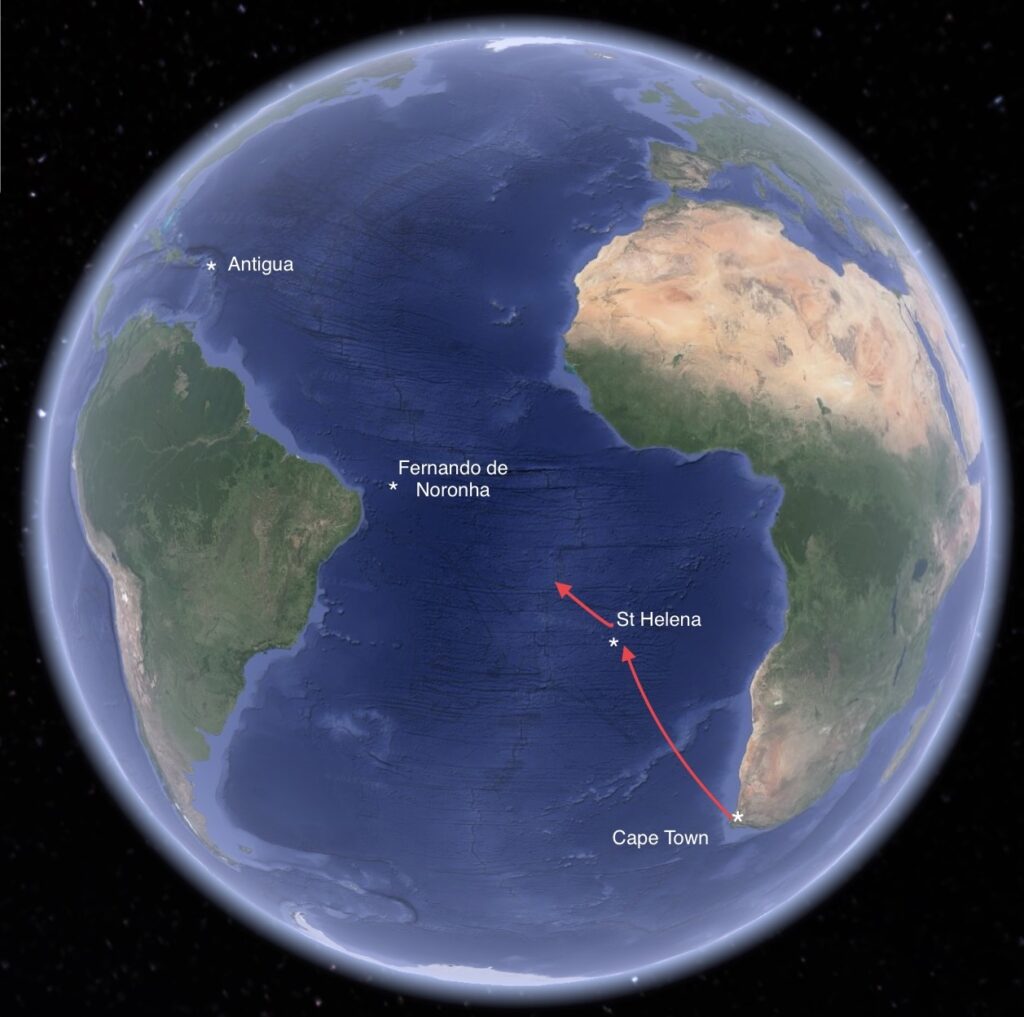
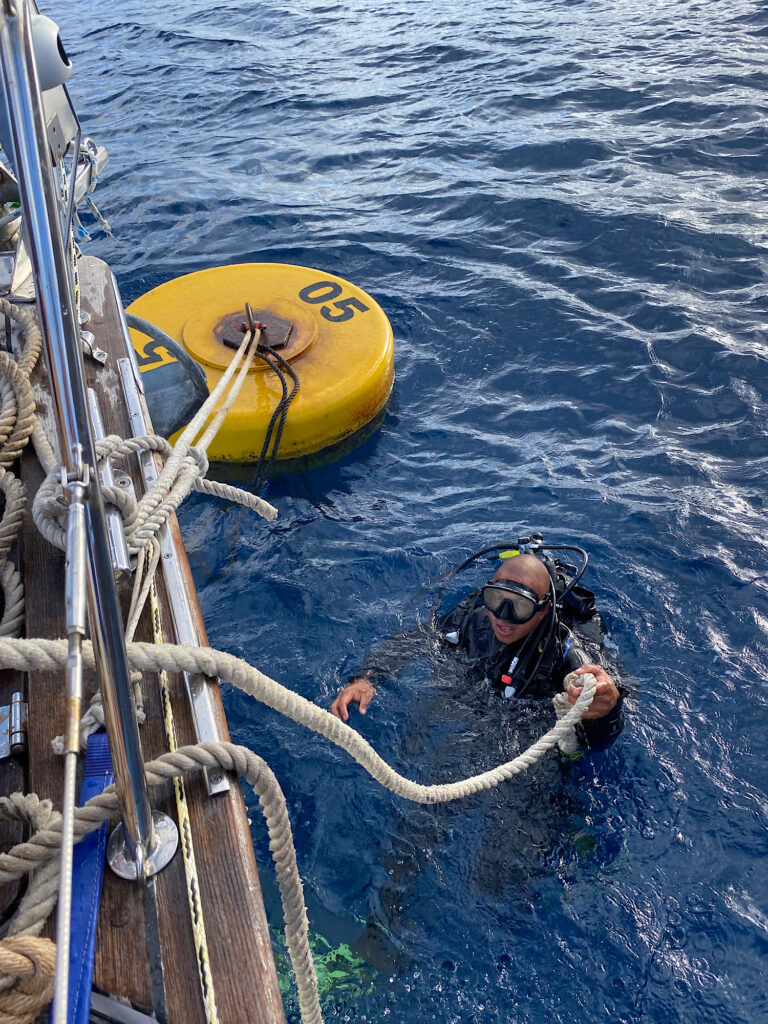
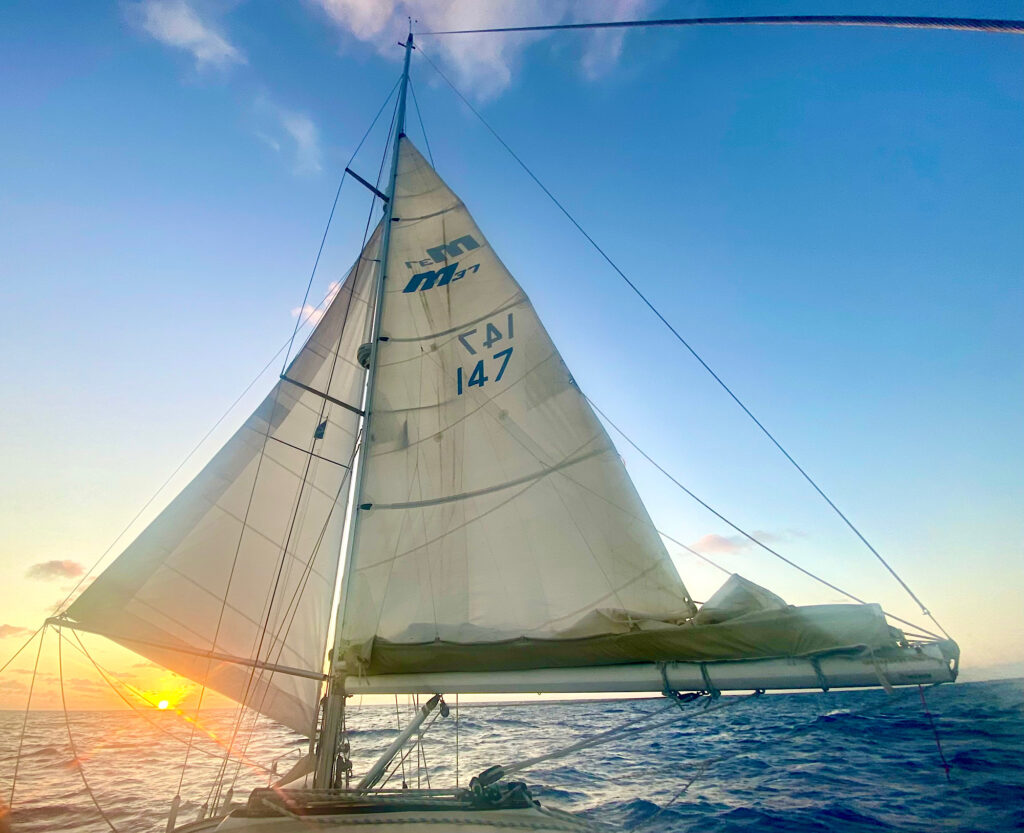
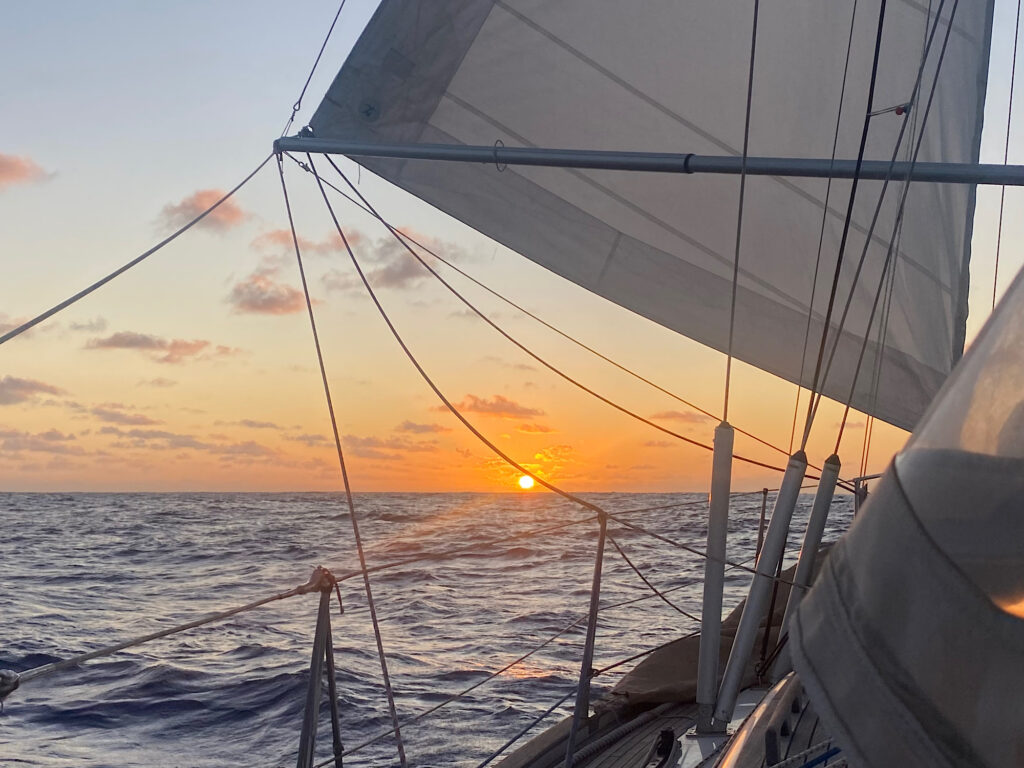
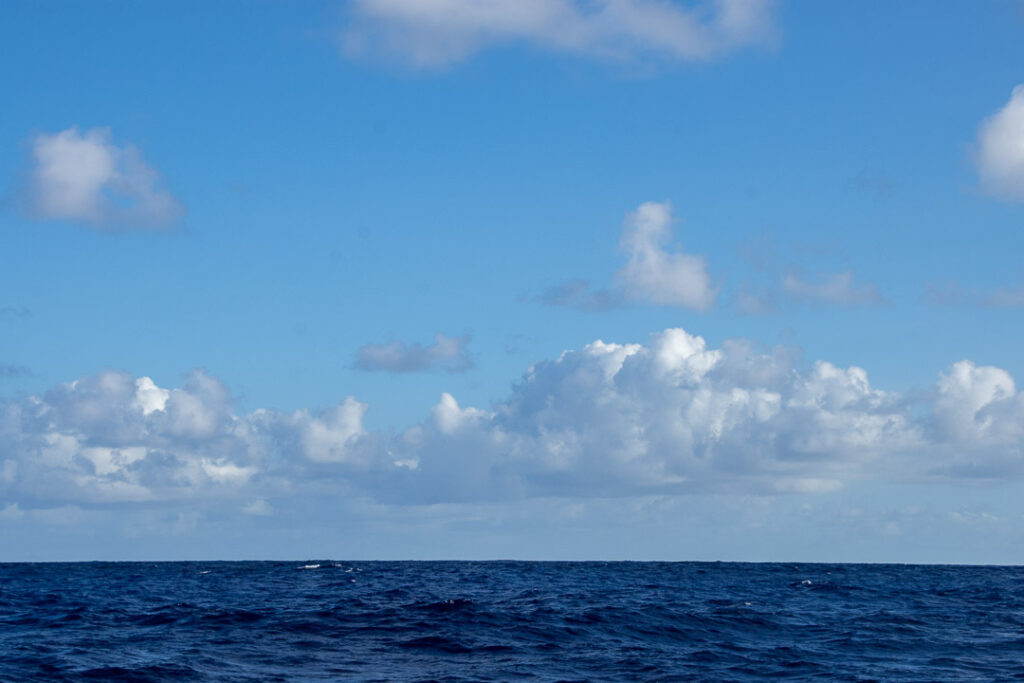
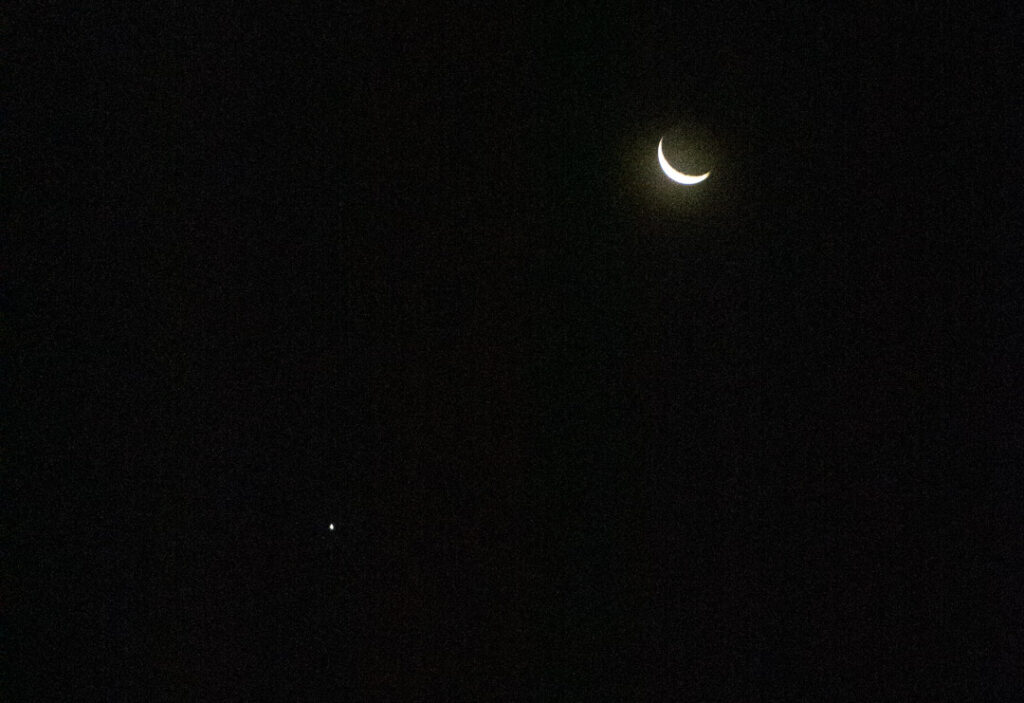
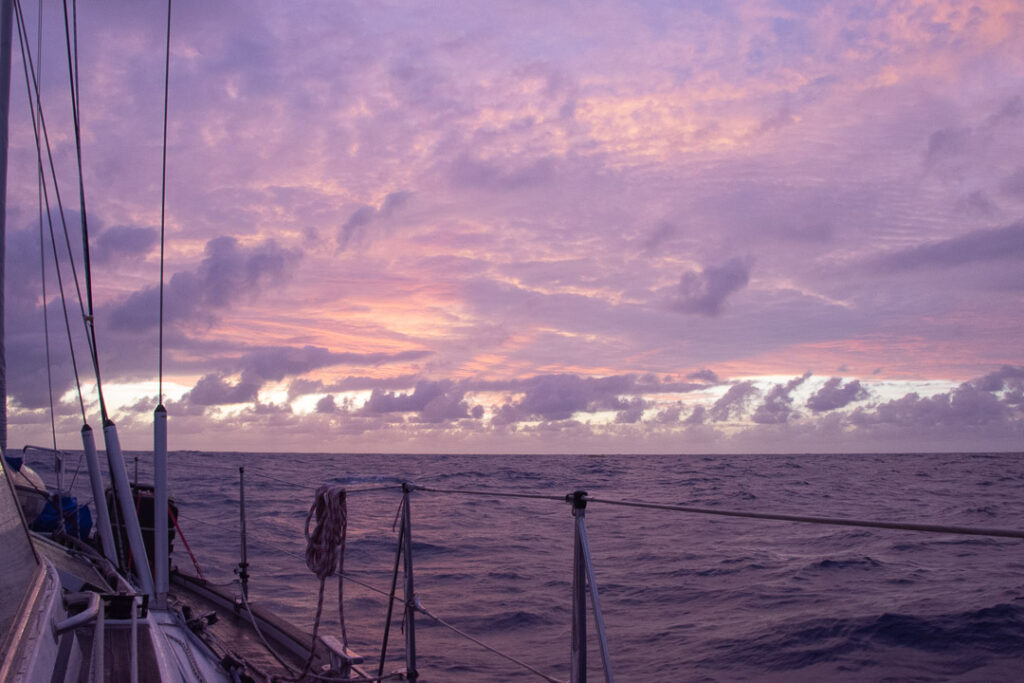
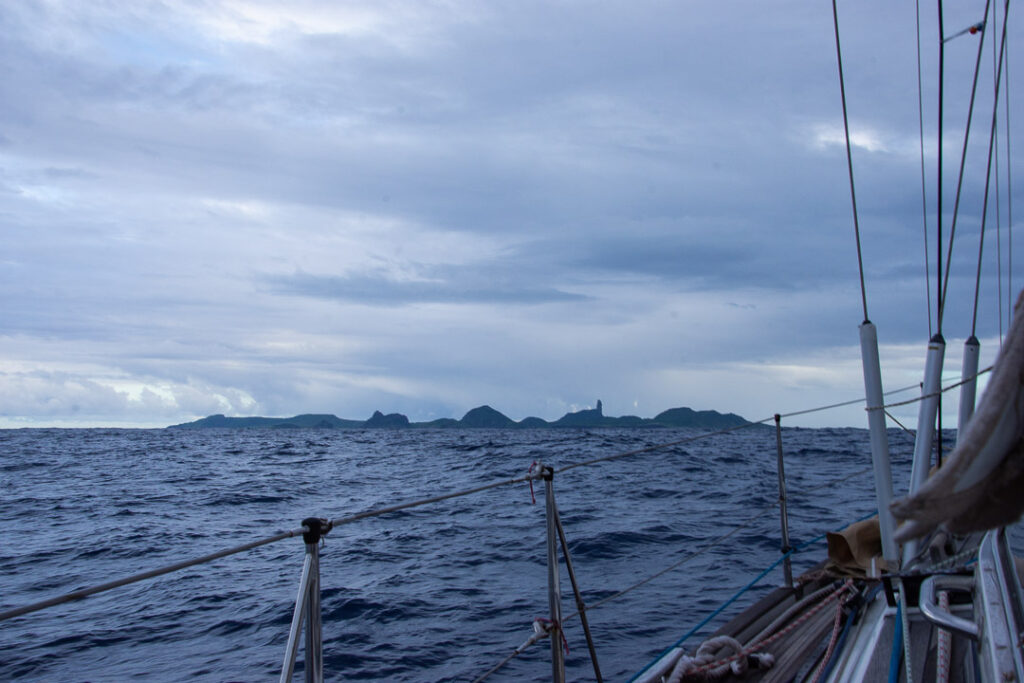
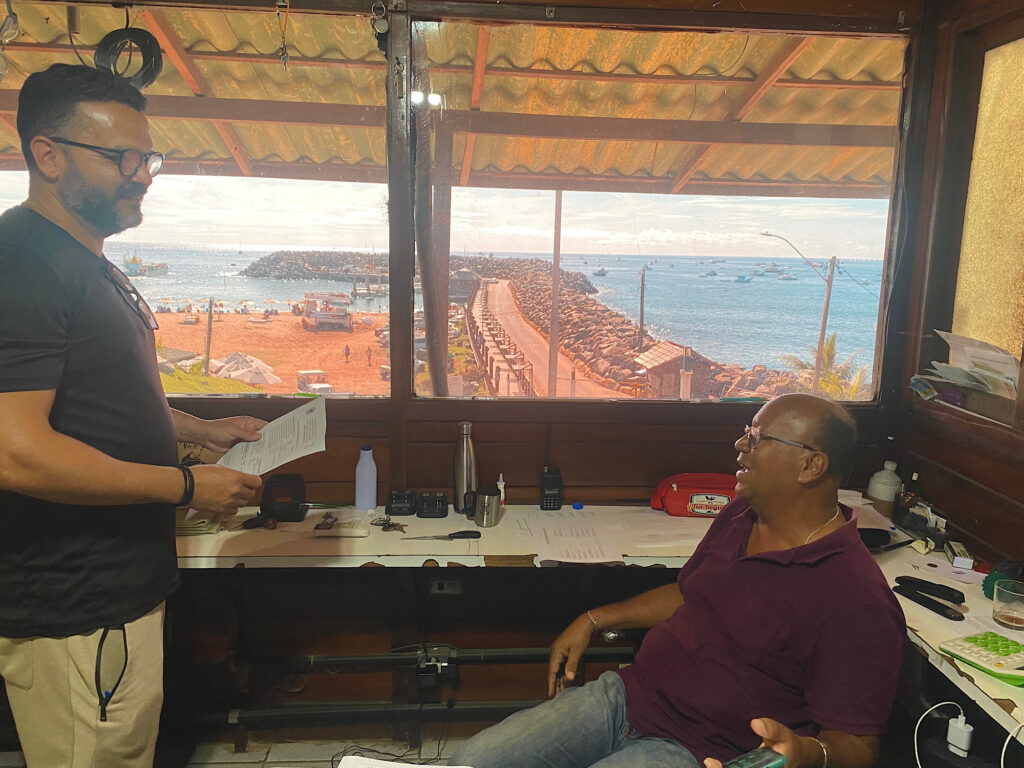
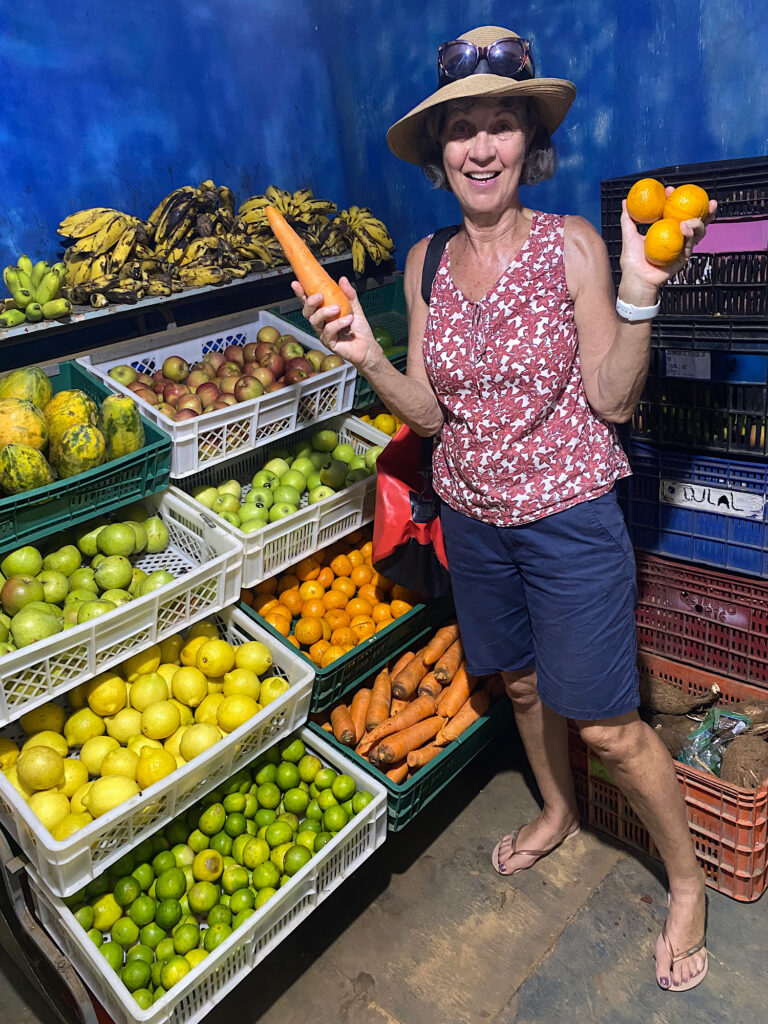
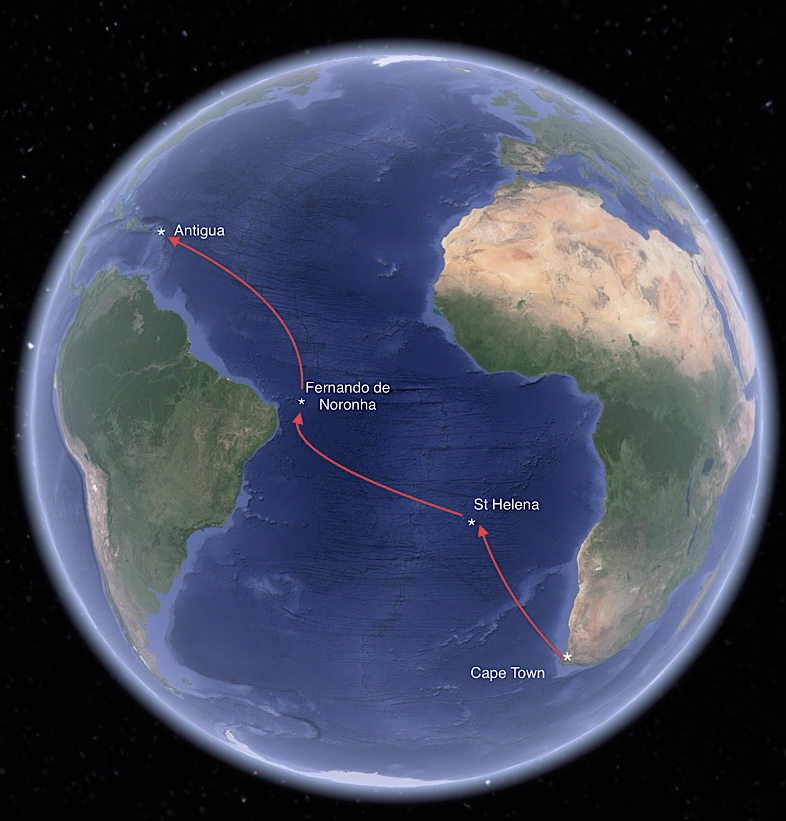
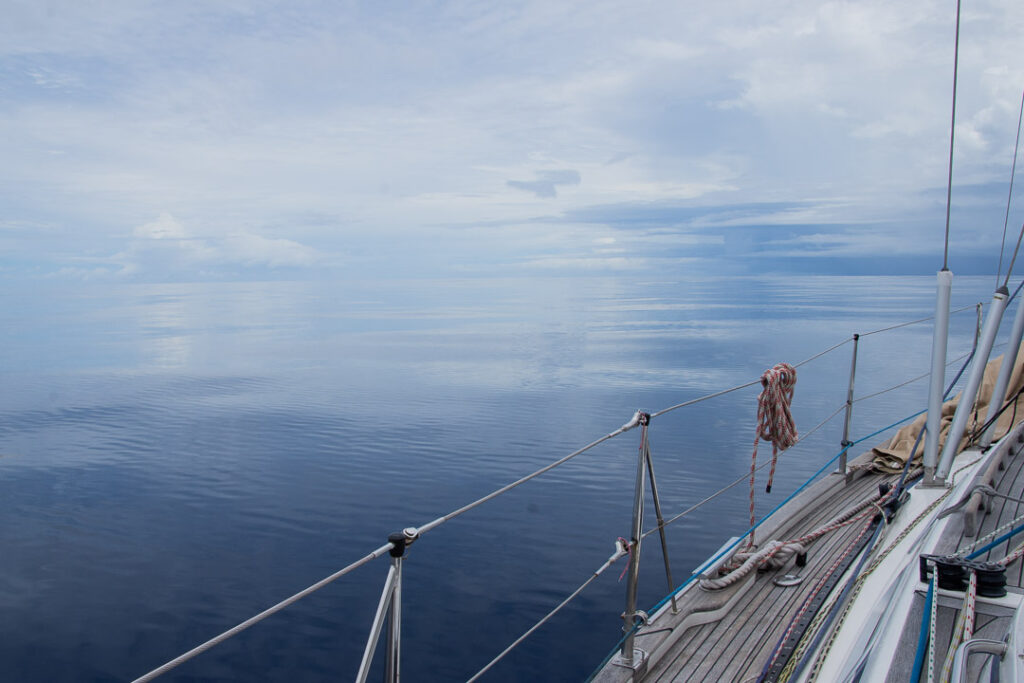
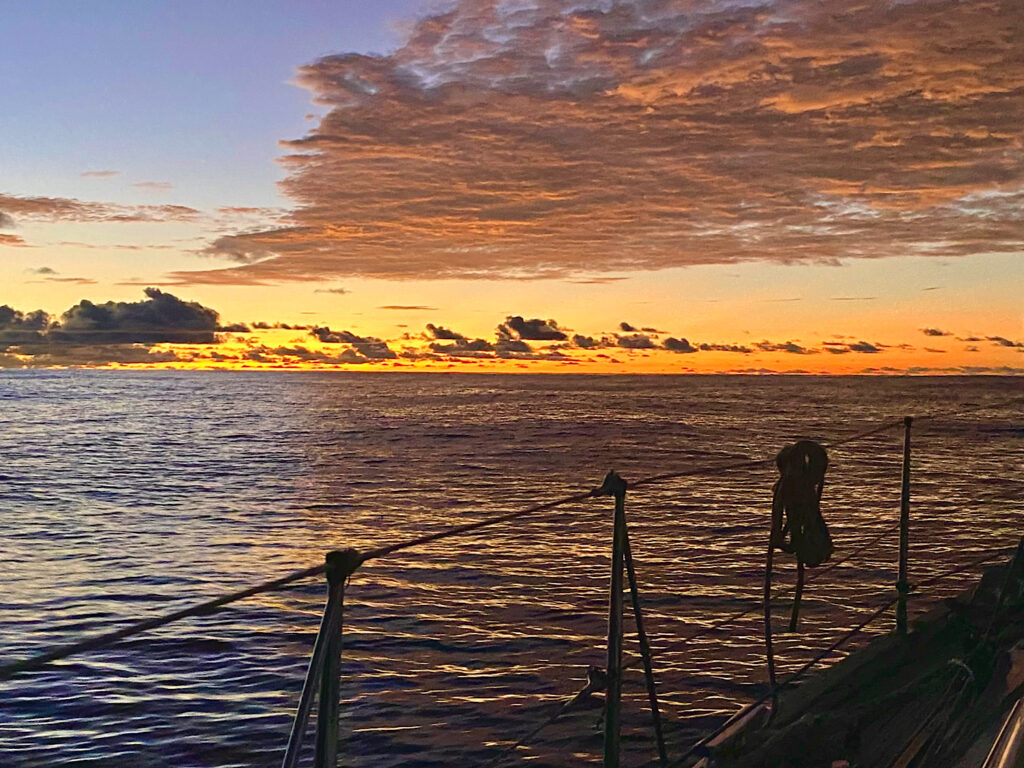
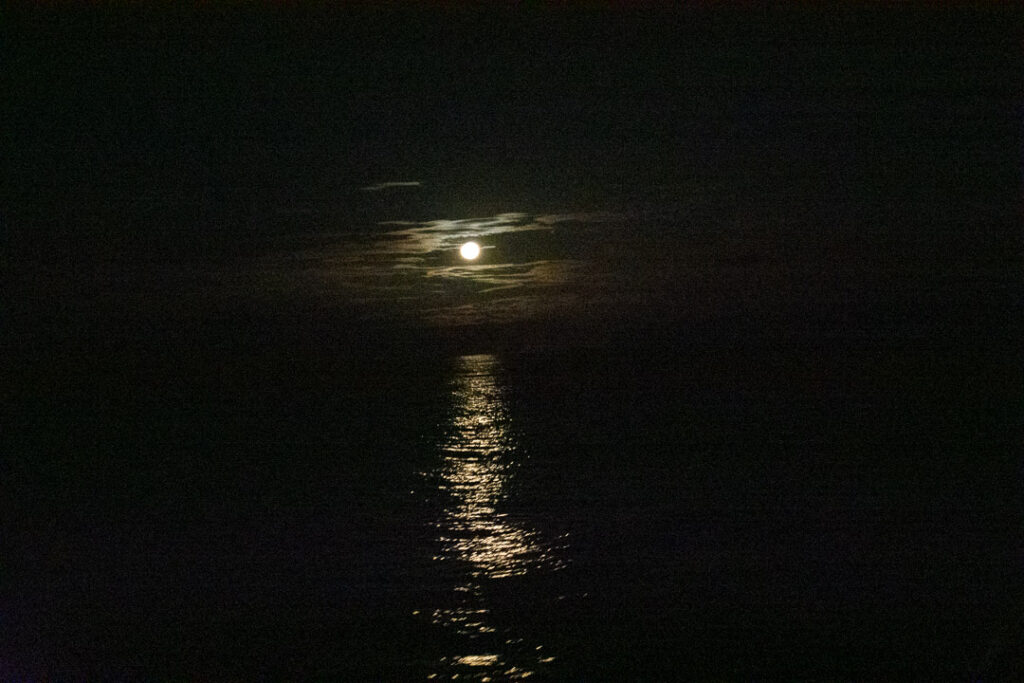
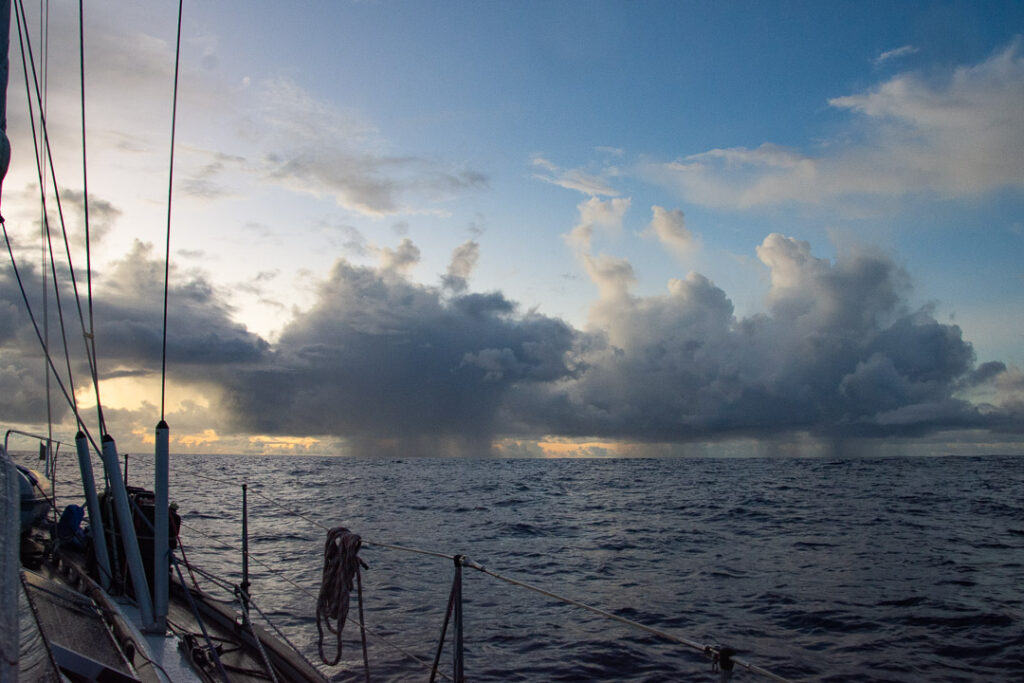
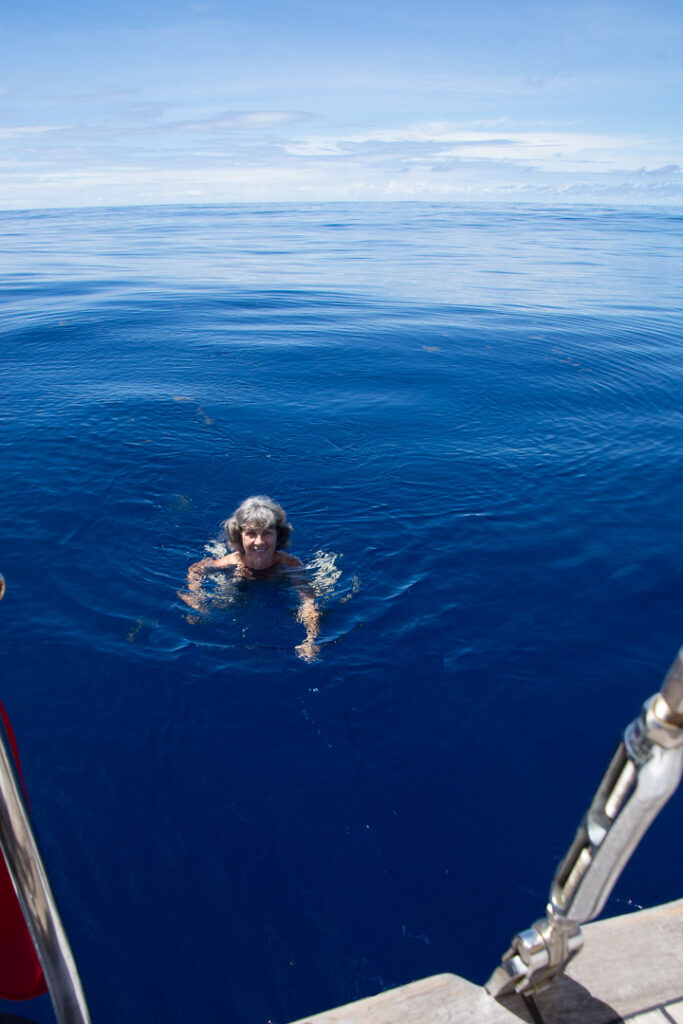
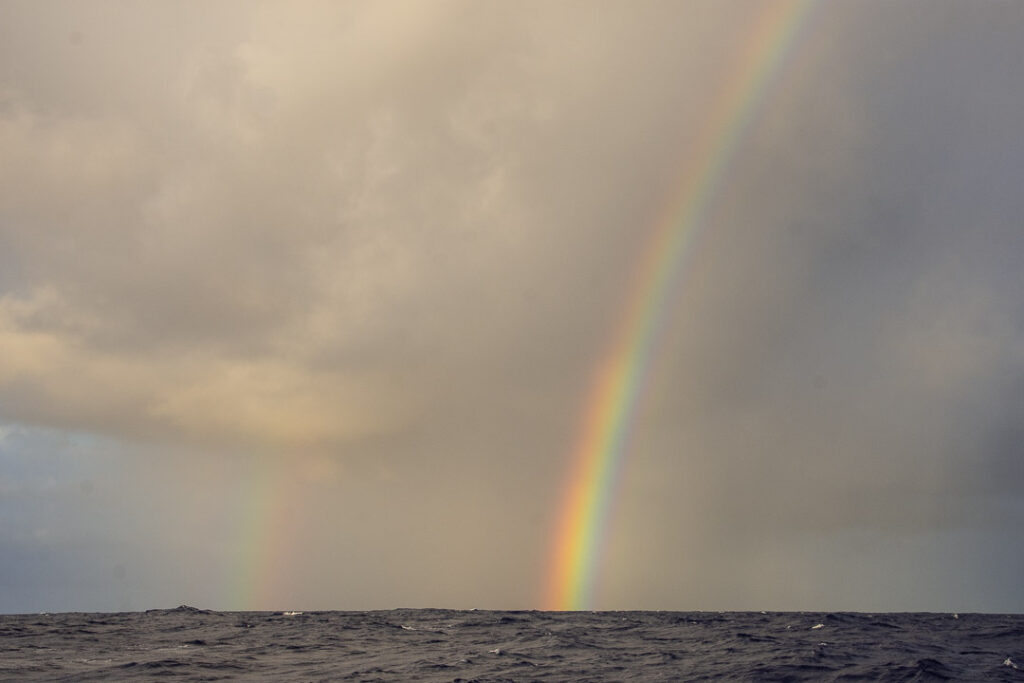
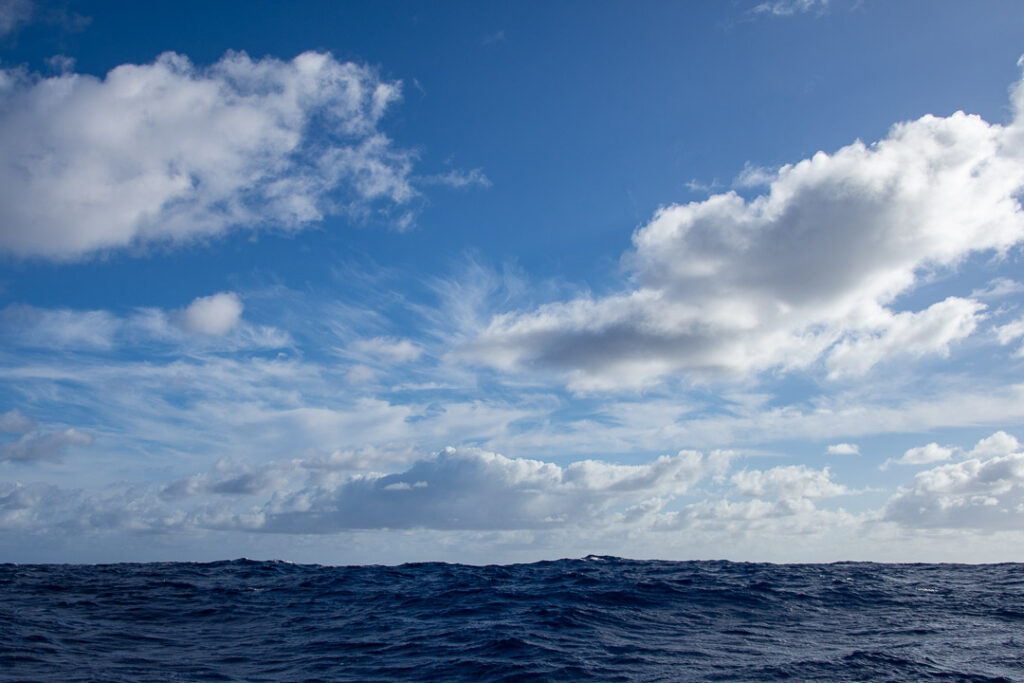
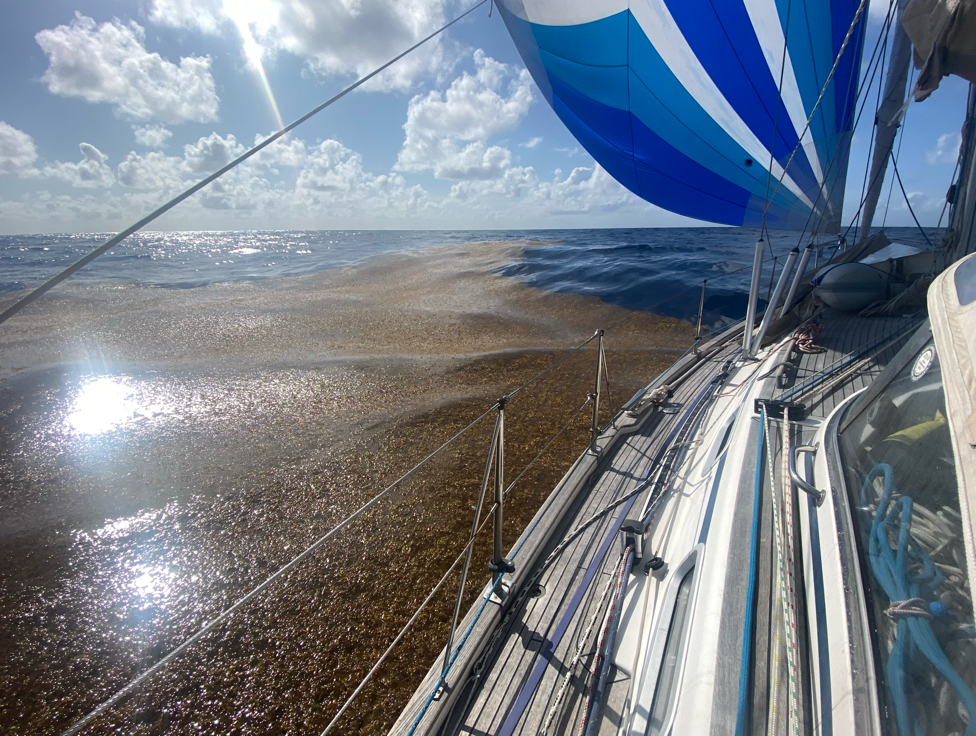
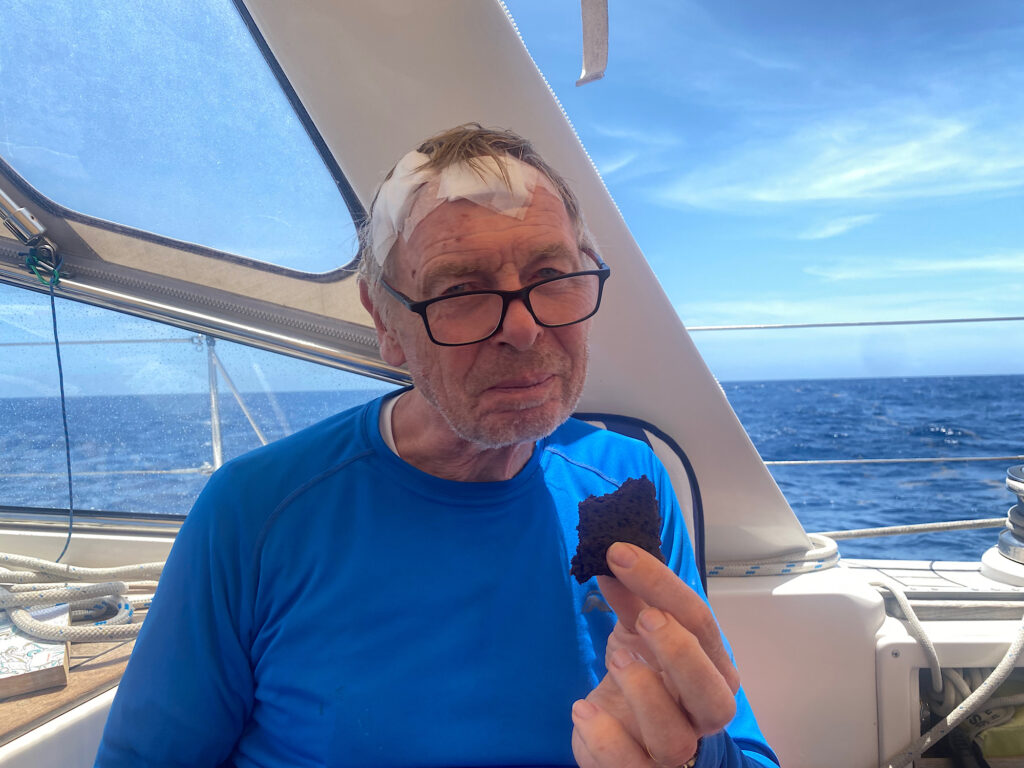
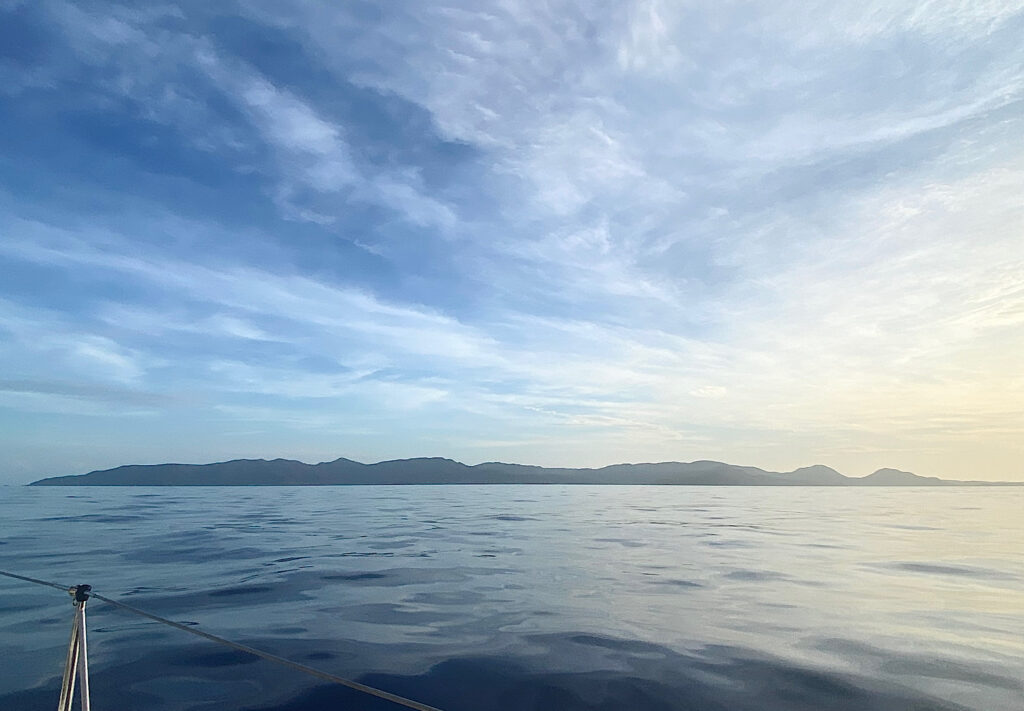
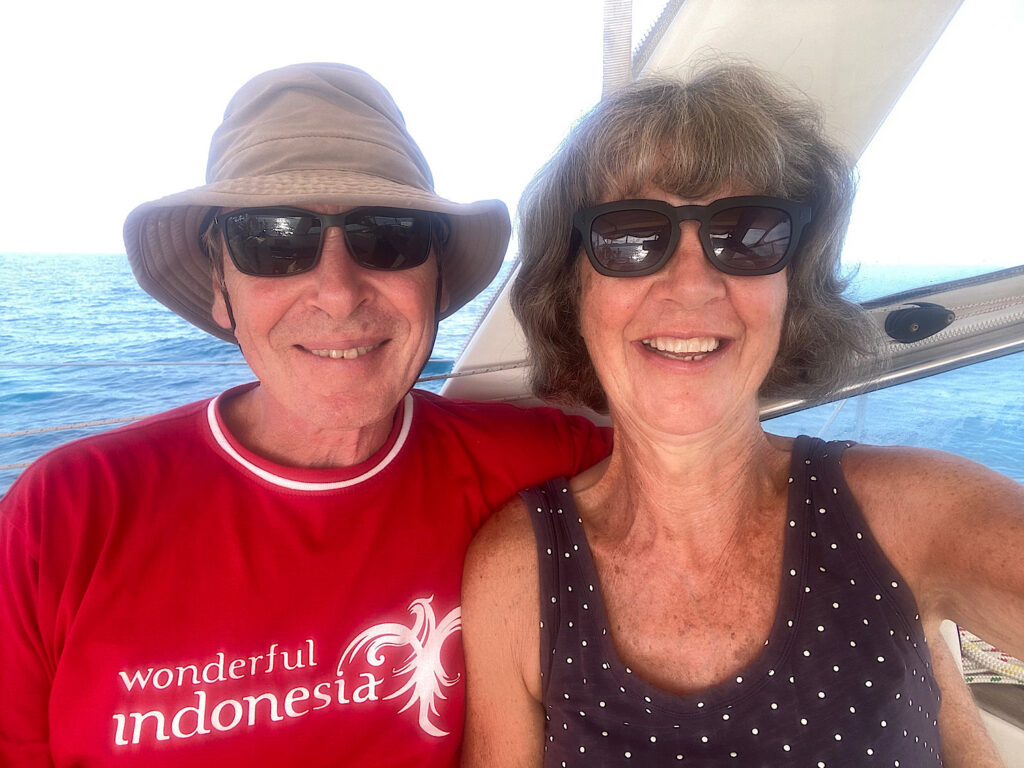
6 Comments
Gerard
June 7, 2023 - 6:22 pm2016 seems a long time ago. I know you have had trips home and of course there was Covid but how are you going to settle down or do what one of the French racers did go round again. Are you going to make a book of all your wonderful photos. I do miss sailing now being classified as disabled . What is your ETA Bristol – mind the mud banks they are still there.
annie
June 8, 2023 - 11:08 amHi Gerard
Sorry to hear about your health problems. We have absolutely no plans to go round again! But never say never. I’d like to make a photo book of the blog. We’ll go into Portishead marina initially then the grand entry into Bristol in August for a few weeks.
Annie xx
Paul Bayley
June 7, 2023 - 7:03 pmGreat read again, I do hope you are able to publish your writings along with the photos, if has been a great read and so interesting, I am sure other people would be so interested in it.
Hope last bit goes well.
annie
June 8, 2023 - 11:11 amThanks Paul. No plans to publish.. hopefully I’ll get round to doing a photo book though.
Annie xx
Steve
June 9, 2023 - 12:40 pmGreat blog and glad Hugh didn’t harm himself too seriously! x
annie
June 9, 2023 - 8:08 pmThanks Steve. Yes, a big relief. It could have been much worse 🥺xx